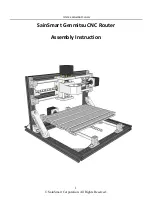
340
Figure 94
RPT building at the multicast source side
Source
Server A
Server B
Host B
Host C
Receiver
Receiver
IPv6 Multicast packets
Source-side RPT
RP
Source
Host A
Receiver
As shown in
, the process of building a source-side RPT is relatively simple:
4.
When an IPv6 multicast source sends IPv6 multicast packets to IPv6 multicast group G, the DF in
each network segment unconditionally forwards the packets to the RP.
5.
The routers along the path from the source’s directly connected router to the RP form an RPT branch.
Each router on this branch adds a (*, G) entry to its forwarding table. The * means any IPv6
multicast source.
After a bidirectional RPT is built, multicast traffic is forwarded along the source-side RPT and receiver-side
RPT from IPv6 multicast sources to receivers.
NOTE:
If a receiver and an IPv6 multicast source are at the same side of the RP, the source-side RPT and the
receiver-side RPT might meet at a node before reaching the RP. In this case, IPv6 multicast packets are
directly forwarded by the node to the receiver, instead of by the RP.
IPv6 administrative scoping overview
Division of IPv6 PIM-SM domains
Typically, an IPv6 PIM-SM/IPv6 BIDIR-PIM domain contains only one BSR, which is responsible for
advertising RP-set information within the entire IPv6 PIM-SM/IPv6 BIDIR-PIM domain. The information for
all multicast groups is forwarded within the network scope administered by the BSR. This is called “IPv6
non-scoped BSR mechanism.”
To implement refined management, an IPv6 PIM-SM/IPv6 BIDIR-PIM domain can be divided into one
IPv6 global scope zone and multiple IPv6 administratively scoped zones—IPv6 admin-scope zones. This
is called “IPv6 administrative scoping mechanism.”
The IPv6 administrative scoping mechanism effectively releases stress on the management in a single-BSR
domain and enables provision of zone-specific services using private group addresses.
Summary of Contents for A5500 EI Switch Series
Page 12: ...xii Conventions 425 Index 427 ...
















































